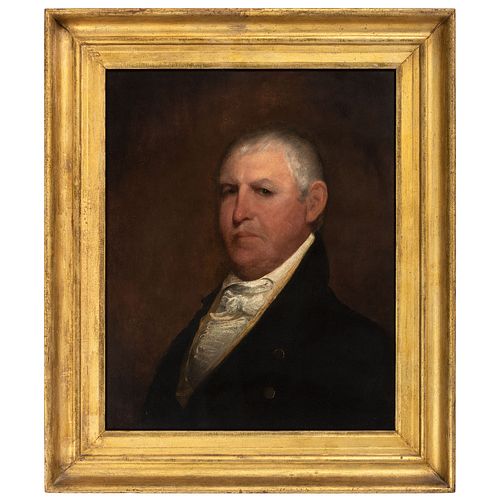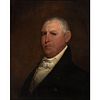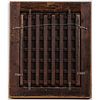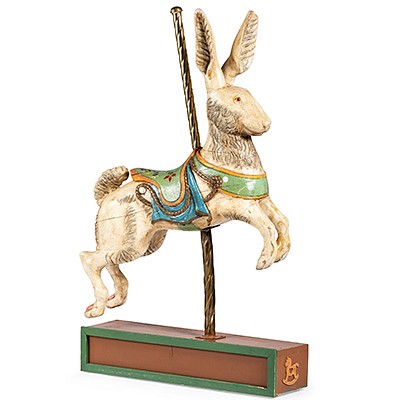Matthew Harris Jouett (1788-1827), A Portrait of Governor Isaac Shelby (1750-1826)
About Seller
6270 Este Ave.
Cincinnati , OH 45232
United States
With offices in Cincinnati, Cleveland and Denver, Cowan’s holds over 40 auctions each year, with annual sales exceeding $16M. We reach buyers around the globe, and take pride in our reputation for integrity, customer service and great results. A full-service house, Cowan’s Auctions specializes in Am...Read more
Two ways to bid:
- Leave a max absentee bid and the platform will bid on your behalf up to your maximum bid during the live auction.
- Bid live during the auction and your bids will be submitted real-time to the auctioneer.
Bid Increments
| Price | Bid Increment |
|---|---|
| $0 | $25 |
| $500 | $50 |
| $1,000 | $100 |
| $2,000 | $250 |
| $5,000 | $500 |
| $10,000 | $1,000 |
| $20,000 | $2,500 |
| $50,000 | $5,000 |
| $100,000 | $10,000 |
About Auction
Sep 22, 2020
Cowan's American Furniture, Folk and Decorative Arts auction will feature two sessions: the first session on Tuesday, September 22 includes 250 lots of furniture, paintings, folk art, toys, mechanical and still banks, stoneware, trade signs, advertising, and more. Cowan's Auctions dawnie@cowans.com
- Lot Description
Circa 1818
oil on cradled panel
25 3/4 x 20 inches.
The ambitious young artist Matthew Harris Jouett spent the summer of 1816 working in the studio of Presidential portraitist Gilbert Stuart. From that old master, he learned how to set his palette, place the figure on the planar field, and, perhaps most importantly, size up the subject’s character. In Some Notes and observations from repeated conversations with Gilbert Stuart…(Pennington, Matthew Harris Jouett… pp. 299-309) Jouett offers, with “some modesty…a reflection of mine: In painting great public characters be sure to have them elevated above you—this opens the countenance & gives a grandeur to the figure…” It was a compositional device he would employ to great effect, and considerable success.
Once he returned to Kentucky and established a studio near the Court House square in Lexington, Jouett set about painting many of the seminal figures in early Kentucky history. Drawing upon social contacts from his student days at Transylvania University, family ties, and his distinguished service in the War of 1812, Jouett soon became the portraitist of choice for legends of the Commonwealth.
One of the first of those he painted was Isaac Shelby. Shelby had been a Revolutionary War soldier, a hero of the Battle of King’s Mountain, South Carolina. After the war he settled in Knob Creek, Lincoln County, until like Cincinnatus and George Washington, he was called from the field to participate in political conventions leading to statehood in 1792. He was unanimously elected governor, May 1792, and served until June 1796, when he again left public life for sixteen years to farm at Traveler’s Rest, Boyd County. As war loomed, he was again elected Governor in 1812, and as a General commanded forces at the epic Battle of the Thames. Jouett painted him after his return to farming at Traveller’s Rest, where he died and is buried.
Lewis Collins, Whig historian sublime, observed that the “vigor of his constitution fitted him to endure active and severe bodily exercise, and the energetic symmetry of his person, united with a peculiar suavity of manner, rendered his deportment impressively dignified; his strong natural sense was aided by close observation on men and things: and the value qualities of method and perseverance, imparted success to all his efforts.” (Collins, History of Kentucky…Kentucky Historical Society reprint, 1966 p 531).
Jouett’s ability to apply Stuart’s formula for restrained exaltation is beautifully apparent in his depiction of Shelby’s “peculiar suavity of manner…” The old war horse sits high on the canvas, with that slightly bemused look which Jouett often painted as a coy restraint from implicit arrogance, or outright haughty demeanor. With that wary welcome look Shelby joins others from Jouett’s canon who
gaze down through the ages from their golden frames with secure self-awareness and polite regard.
LITERATURE:
Martin, Mrs. William H. Catalog of All Known Paintings by Matthew Harris Jouett. Louisville: J.B. Speed Memorial Museum, 1939, number 412, p. 44.
Pennington, Estill Curtis. Matthew Harris Jouett (1788-1827) his life and work. 2020, pp. 240-243.
Price, Samuel Woodson. Old Masters of the Bluegrass: Jouett, Bush, Grimes, Frazer, Morgan, Hart. Filson Club Publications, no. 17. Louisville: J.P. Morton and Co., 1902, p. 64.
Provenance: By direct descent in the family from the sitter to his elder son Thomas Hart Shelby; to his son Edmund Pendleton Shelby; to his son Thomas Hart Shelby; to the father of the current owner. It should be noted that this is the original portrait Jouett painted of Shelby from life, and upon which he based several copies painted for family members, notably the oft reproduced version given by his descendant Susanna Preston Shelby Grigsby to the Kentucky Historical Society. This portrait has been seldom seen and never publicly exhibited. - Shipping Info
-
Buyers are required to pay for all packing, shipping and insurance charges. Overseas duty charges are the responsibility of the successful Bidder. Be aware that for larger and/or valuable items, shipping charges can be substantial. - If there is no shipping amount on listed your invoice, you will need to make arrangements to pick up or ship your purchase through an alternative shipping company. Our shipping department can be contacted at 513.871.1670 (ext. 219) or email shipping@cowans.com. - Shipping charges include insurance for your order while in transit. If you have private insurance we will adjust your charge to include only packing and shipping. - Please allow 14 – 21 days after payment to package and ship your purchase as carefully as possible.
-
- Buyer's Premium



 EUR
EUR CAD
CAD AUD
AUD GBP
GBP MXN
MXN HKD
HKD CNY
CNY MYR
MYR SEK
SEK SGD
SGD CHF
CHF THB
THB













